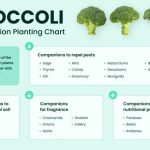Yes, potatoes and tomatoes are related. They are both members of the nightshade family, Solanaceae. Other plants in this family include eggplants, peppers, and tobacco.
Potatoes (Solanum tuberosum) and tomatoes (Solanum lycopersicum) are both herbaceous annuals that are native to South America.
Although they are related they have some distinct differences, In this post, we’ll know these in detail.
If the same family, what is the key difference?
There are several key differences between potatoes and tomatoes, even though they are members of the same family (Solanaceae). Some of the most notable differences include:
Appearance:
Potatoes and tomatoes have different physical characteristics.
| Appearance | Potato | Tomato |
| Taste | Starchy | Falvorus |
| Roots system | Tuberous root | Shallow root system |
| Climates | Cooler climates | Warmer climates |
| Types | Larger, thicker leaves and stem | Relatively Small, thicker leaves and stem |
| Fruits | Less juicy | Highly Juicy |
Use:
Potatoes and tomatoes are used in different ways. Potatoes are grown for their underground tubers, which are used as a staple food in many parts of the world. Tomatoes are grown for their juicy, edible fruit, which is used in a wide variety of dishes.

Nutritional value:
Potatoes and tomatoes have different nutritional profiles.
| Potato | Tomato |
| Good source of carbohydrates, fiber, and vitamin C | Good source of vitamins A and C, potassium, and lycopene. |
| Gives primary nutrients and alternatives to rice, flour, etc. | For Vegetable purposes. |
Flavor:
Potatoes and tomatoes have different flavors. Potatoes have a starchy, slightly sweet taste, while tomatoes have a sweet, slightly acidic taste.
Culinary uses:
Potatoes and tomatoes are used in different types of dishes. Potatoes are often used in stews, soups, and as a side dish, while tomatoes are commonly used in salads, sauces, and as garnish.
Can I Plant Tomato And Potato Concurrently?
It is generally not recommended to plant tomatoes and potatoes concurrently in the same area of the garden. This is because both plants belong to the nightshade family (Solanaceae) and can be affected by the same pests and diseases.
For example, both plants are susceptible to fungal diseases such as early blight and late blight, which can spread easily between the two crops. In addition, both plants are vulnerable to insect pests such as potato beetles and tomato hornworms, which can damage the plants and reduce yields.
Planting tomatoes and potatoes nearby can also lead to competition for nutrients and water, which will negatively impact the growth and development of both crops.
Instead of planting tomatoes and potatoes concurrently, it is generally recommended to plant them in separate areas of the garden or to alternate the location of these crops from year to year.
This can help to reduce the risk of pests and diseases and ensure that both crops receive the necessary nutrients and water for optimal growth.
Which Crop Is Best For Strip Or Row Copping?
Both tomatoes and potatoes can be grown using strip or row cropping, which is a method of planting crops in narrow, linear rows rather than in large, wide beds.
This method can be effective for both crops, as it allows for easier access to the plants for cultivation, pest control, and harvesting.
In general, strip cropping can be especially useful for tomatoes and potatoes, as it allows for more efficient use of space and can reduce the risk of pest and disease problems.
However, it is important to consider the specific needs of each crop when deciding which one to grow using strip cropping.
For example, tomatoes tend to be more sensitive to pests and diseases than potatoes, so they may require more careful management and attention when grown using strip cropping.

Is the Same Management Needed for Both Tomato And Potatoes?
While tomatoes and potatoes are both members of the same family they do have some differences in terms of management. Here are a few key differences to consider when growing these crops:
Climate: Tomatoes and potatoes have different climate requirements. Tomatoes are generally grown in warmer climates, while potatoes prefer cooler temperatures. It is important to choose varieties of each crop that are well-suited to the local climate.
Soil: Both tomatoes and potatoes prefer well-drained, fertile soil with a pH between 6.0 and 6.8. However, potatoes are more tolerant of heavy, clay-like soil than tomatoes, which prefer lighter, sandy soil.
Watering: Both tomatoes and potatoes need regular watering, but they have different water requirements. Tomatoes are more sensitive to drought than potatoes and may need more frequent watering, especially during dry spells.
Fertilization: Both tomatoes and potatoes benefit from regular fertilization, but they have different nutrient needs. Tomatoes generally require more phosphorus and potassium than potatoes.
Pest and disease control: Both tomatoes and potatoes are susceptible to a variety of pests and diseases, but they may require different pest and disease control measures. For example, potatoes are particularly vulnerable to fungal diseases such as early blight and late blight, while tomatoes are more prone to insect pests such as potato beetles.
Can I Graft Tomato and Potato?
It is generally not possible to graft tomato and potato plants together, as they are not compatible for grafting. Grafting is a method of plant propagation that involves attaching a stem or shoot from one plant (the scion) to the root system of another plant (the rootstock).
Grafting is often used to improve the performance of plants, such as by increasing their resistance to pests and diseases or by improving their growth and productivity.
However, it is generally not possible to graft plants from different species or genera together, as they have incompatible root systems and cannot form a successful union.
In the case of tomatoes and potatoes, these two crops are not only from different species (Solanum lycopersicum and Solanum tuberosum, respectively), but they also belong to different genera within the nightshade family (Solanaceae).
As a result, it is not possible to graft a tomato plant onto a potato plant or vice versa.
While it is not possible to graft tomato and potato plants together, it is possible to propagate both crops using other methods, such as seed planting or cuttings. These methods can be used to produce new plants that are genetically identical to the parent plants.
Sum Up:
In conclusion, potatoes and tomatoes are indeed related as they both belong to the nightshade family, Solanaceae. While they share this botanical connection, they exhibit several significant differences in terms of appearance, taste, climate preferences, culinary uses, and nutritional value. Their distinct characteristics make them suitable for different purposes in cooking and gardening.

I am a graduate of Bangladesh Agricultural University, where I delved into various agricultural disciplines, equipping me with a profound understanding of agriculture. Beyond academics, I have hands-on experience in gardening and crop cultivation. My passion is to embrace sustainable farming and horticulture. With a BSc in Agriculture, I am dedicated to promoting environmentally conscious and efficient agrarian practices.
Bachelor of Science (BSc) in Agriculture (Hons.)
Master of Science. (Sustainable Agriculture & Food Security ) (MS)
Bangladesh Agricultural University




